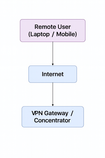Data Center Aggregation Layer Design: Best Practices for Resiliency and Scalability
- The Itvue Team
- Aug 22
- 2 min read
Author Ermias Teffera
The Aggregation Layer (sometimes called the Distribution Layer) sits between the Access Layer (where end devices connect) and the Core Layer (the high-speed backbone). Its design is crucial for policy enforcement, redundancy, and traffic optimization.
1. Role of the Aggregation Layer
Aggregates access switches: Combines traffic from multiple access switches before sending it to the core.
Enforces policies: Implements security, QoS, and access control lists (ACLs).
Performs inter-VLAN routing: Handles routing between VLANs in the access layer.
Redundancy and resiliency: Provides failover paths to maintain uptime if a link or switch fails.
2. Design Principles
a) Redundant Uplinks
Each aggregation switch should connect to two core switches for redundancy.
Use EtherChannel to combine uplinks for higher bandwidth and load balancing.
b) Layer 3 Routing
Implement Layer 3 links between aggregation and core switches to avoid spanning tree loops.
This allows faster convergence and better scalability.
c) Access-to-Aggregation Ratio
Cisco recommends a 20:1 access-to-aggregation ratio: one aggregation uplink should handle traffic from up to 20 access switch ports.
Ensures bandwidth is sufficient without oversubscription.
d) ECMP (Equal-Cost Multi-Path)
Multiple uplinks to the core can use ECMP for load balancing.
Maximizes bandwidth utilization and avoids congestion on a single path.
e) Policy Enforcement
Aggregation switches enforce security, QoS, and traffic shaping.
Keeps the core layer simple and focused on high-speed forwarding.
3. Aggregation Layer Topology Diagram

Aggregation switches combine traffic from multiple access switches.
ECMP or EtherChannel uplinks provide redundancy and high bandwidth.
4. Best Practices
Deploy dual aggregation switches per access block for redundancy.
Keep core-simple, aggregation-smart: enforce policies at aggregation, not core.
Monitor link utilization to avoid oversubscription.
Use Layer 3 uplinks to the core for loop-free design and fast convergence.
Apply EtherChannel and ECMP to aggregate bandwidth and optimize traffic flow.
5. Summary
The aggregation layer bridges the access and core layers, providing policy enforcement, redundancy, and inter-VLAN routing.
Use Layer 3 links, dual-core connections, ECMP, and EtherChannel to ensure scalable, resilient, and high-performance networks.










Comments